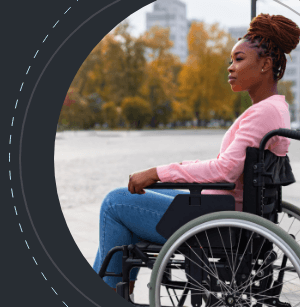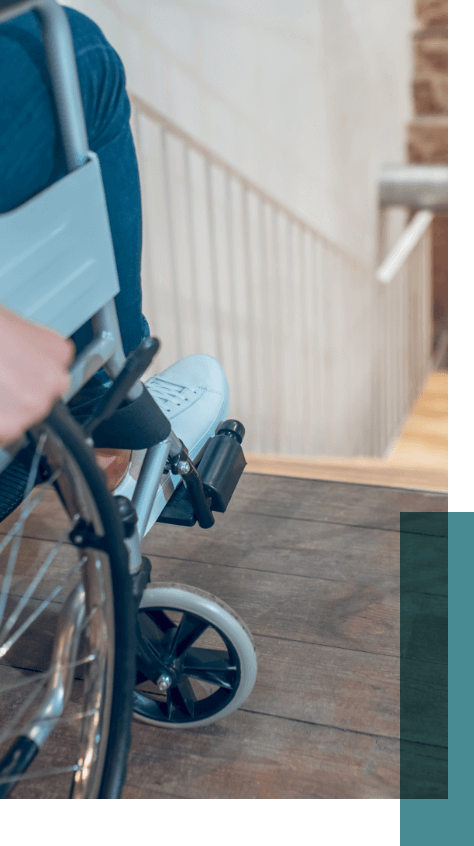Economic stability, or the lack thereof, can have a significant impact on a person’s health. Studies have proven that economic factors that cause hardship in a person’s life - such as poverty, a lack of adequate housing, and food insecurity - are also detrimental to their overall health, contributing to downstream health impacts such as comorbidities, mental health concerns, and other factors.
When health problems stemming from economic instability accumulate, they can impact the lives of workers’ comp patients, further complicating their course of care. In order to best assist patients, it is of benefit to understand the impact economic instability can have on patients’ lives, care, and health.
As a social determinant of health (SDoH), economic stability is composed of the four following components:
Employment status is directly tied to one’s overall health. First and foremost, unemployed individuals often have less access to healthcare.1 Health concerns that fall outside of workers’ comp may not receive necessary attention, as individuals in need of help lack the insurance and/or finances to pay for medical care.
Second, unemployment can contribute to negative mental health impacts. Individuals lacking structure, a routine, sense of purpose or identity may develop feelings of worthlessness.2 These emotions can be made worse when combined with financial anxieties and can contribute to depression or other mental health concerns.3
Even light duty work has been demonstrated to contribute to more positive workers’ comp outcomes.4 Having something to wake up to is greatly beneficial to overall health, and the social element of work can be good for mental health. Additionally, depending on available light duty opportunities, light duty can function as a form of occupational therapy for workers recovering from a workplace injury. Unemployed individuals do not have the option to incorporate a light duty component in their recovery.
Unemployment can be associated with the development or exacerbation of a range of health issues, any one of which can impact care among injured worker patients, creating a spectrum of cascading health consequences and potential comorbidities.
Patients with mental health concerns may find themselves unmotivated to participate in their care, often struggling with feelings of inadequacy, or wondering how they may provide for their families. Helping patients who face mental health concerns can do wonders for their physical condition.
Poverty can affect health by limiting access to proper nutrition and healthy foods, adequate shelter, safe neighborhoods with clean air and water, and other elements that define an individual’s standard of living. Individuals who live in low-income or high-poverty neighborhoods are likely to experience poor health due to a combination of these factors.
live in poverty.5 In recent decades, income inequality has increased dramatically in the U.S.6
Identifying patients susceptible to these health risks is of benefit in workers’ compensation claims management as their overall health – and by extension the course of their claim – may be more inclined to take turns for the worse.
For instance, the ongoing or severe financial stress that comes with poverty can cause:7
These health concerns can negatively impact both the risk for injury and the ability to recover from injury. In the case of fatigue, lack of sleep, and tense muscles, workers are more likely to get injured. Approximately 13% of workplace injuries are attributable to fatigue, and workers have a 62% higher risk of injury when fatigued.8
Furthermore, low-income individuals are seven times more likely to be in serious psychological distress than higher-income individuals, making them more likely to cope with stress by using alcohol, tobacco, or other substances.9 Such coping can in turn be a detriment to injured worker outcomes.
Additionally, poverty not only contributes to various health problems, but limits one’s ability to manage those health problems, as individuals often cannot afford healthcare. Delaying necessary care creates significant health concerns over time.
Even if an individual has made their way out of poverty, a history of poverty can mean they had health issues that went untreated for years or decades, and the lingering effects of those issues can create health problems that resurface later in workers’ comp claims.
Even when impoverished individuals find themselves able to receive care, they may face additional barriers, including a lack of transportation to make doctor’s appointments, the inability to take time off work, especially if working multiple jobs, and larger familial caretaking responsibilities.

An inability to afford adequate housing can have serious health effects. Poor quality housing is associated with various negative health outcomes, including chronic disease, injury, and poor mental health.10
Issues of adequate housing are becoming more widespread as real estate prices continue to rise, putting even the more fortunate at potential risk of inadequate housing down the road.
Average rent prices increased
25% since 2019, with the national average passing
$2,000 a month11
Cities like
Austin
have seen rent increase by
48%11
House prices went up
17%
within the last year
the strongest rise in 20 years12
U.S. house prices are expected to rise another
10%
in 202212
If more people are forced to live in low-quality homes, corresponding health impacts may become more prominent.
Low-quality housing may also include concerns that directly impact well-being, such as:10,13

ADA-compliant homes are dwellings built or adjusted to be easily accessible, with features such as open floor plans, wider hallways and entryways, varying height countertops, bathroom handrails, ramps, and more.
Injured workers who are temporarily or permanently disabled may not be able to move freely within their own home if it does not meet these standards.
The limitation of mobility can be detrimental to quality of life, requiring intervention to better assist workers’ comp patients. This can become particularly complex when the timing and costs to make home modifications is significant, or if a patient is renting their home and may not be able to modify their living space.
In addition to the quality of one’s home itself, the neighborhood or location of one’s home can also impact health. A few examples of this include:14
1 in 5 Americans lives in an impoverished neighborhood15
A healthy diet is paramount to a healthy lifestyle, but the inability to access healthy food – known as food insecurity – is an issue that plagues many Americans.
Food insecurity is a concept defined as the disruption of food intake or eating patterns because of lack of money and other resources.16 Food insecurity impacts 11% of the population,16 but that may rise as the cost of groceries increased 12% from 2021-2022.17
Food insecurity impacts
11%
of the population16
Meanwhile, the cost of groceries increased
12%
from 2021-2022,17 and with rising inflation, many are making tradeoffs with limited income
First and foremost, healthier foods are more expensive than mass-produced, readily available foods that are highly-processed with high sodium or sugar contents. A meta-analysis of 27 studies found that healthy diets cost on average $1.25 more per person per day than less healthy diets.18
It is an unfortunate truth that many would prefer to consume healthier foods but simply cannot afford to do so. Research has shown that the price difference in healthy and unhealthy foods is a significant cause of poor diet in a large proportion of the U.S. population.19
Additionally, individuals may live in food deserts, areas with little access to grocery stores that carry fresh fruit, vegetables, and other healthier foods, though their neighborhood may offer access to many cheap and unhealthy fast food options.
Essentially, when individuals can only afford or access unhealthy food, they are at a significantly higher likelihood to develop chronic conditions that can lead to more complex workers’ comp claims, as claims with comorbidities require additional care, medications, and costs.

Visibility into when a patient’s health is impacted by economic instability is a key first step. Here are some health consequences related to economic instability and how they impact workers’ comp populations and claims management.
From an overall health perspective, economic instability can exacerbate outcomes for injured workers overall, but this may be even more pronounced for those who also have comorbidities such as diabetes and heart disease. The inability to afford proper healthcare including medications to treat these comorbidities can lead to complications that may put these injured workers at higher risk of recovering significantly slower from their injury, or not recovering at all.
Ensuring a holistic view into an injured worker’s overall health can be impactful. Medical records should be incorporated into the care of an injured worker to ensure that all factors are appropriately considered and addressed. Leveraging partnerships with other care providers can be valuable. A pharmacy benefit manager can partner with payers to help conduct comprehensive patient reviews, as well as identify and manage patient risk factors and treatment regimen risks that arise from these circumstances.
It is well-established that economic instability factors such as unemployment can be detrimental to mental health. In some cases, psychosocial factors can be even more detrimental to claims outcomes than physiologic factors,20 as depression can be a significant inhibitor of restored function.21 Meanwhile, fear avoidance can lead to higher pain and disability levels in injured workers.22
More and more, the workers’ compensation industry is embracing the need to include avenues for behavioral health services within their programs and claims workflows to support injured workers who can benefit from them.
Fatigue brought on by poverty and economic instability increases the risk for workplace injury. For patients already being treated for a workplace injury, fatigue may be made worse by certain medications commonly prescribed within workers’ compensation, which can include CNS depressants, anticonvulsants, benzodiazepines, hypnotics, and muscle relaxants. The identification of fatigue as a concern can inform alternative medication recommendations that avoid exacerbating this concern.
Patients facing financial difficulty may not have reliable transportation, which can make it difficult for them to show up for doctor’s appointments. The availability of reliable transportation through a worker’s compensation program can help address this significant barrier to access to care in these populations.
Injured worker patients who are partially or fully disabled may lack mobility within low-quality homes. The ability to keep a patient mobile is of great importance to their recovery, and access to home modification solutions through workers’ compensation programs can help patients move about their homes and prevent a detrimental lack of mobility.
The health impacts of economic stability are important now more than ever as the U.S. inflation rate has reached a 40-year high.17 More and more individuals are feeling the effects of economic instability as prices for everyday goods and necessities continue to rise:
Gas prices increased
50%
within the last year17
The cost of groceries increased
12%
within the last year17
Rent prices increased
25%
since 2019, averaging $2,000 a month11
Housing prices are up
17%
compared to last year, with an expected rise of 10% this year12
65%
of lower-income adults worry almost daily about paying bills23
36%
of employees earning $100,000 or more say they are living paycheck to paycheck24
The official poverty rate is
11.4%6
far above the 3.6%25 unemployment rate
50%
of workers in the gig economy have a full-time job and are using gig work to supplement their income25